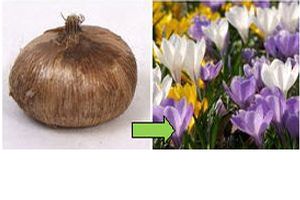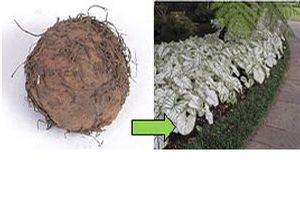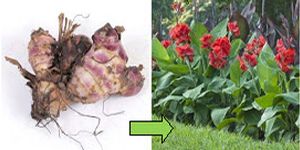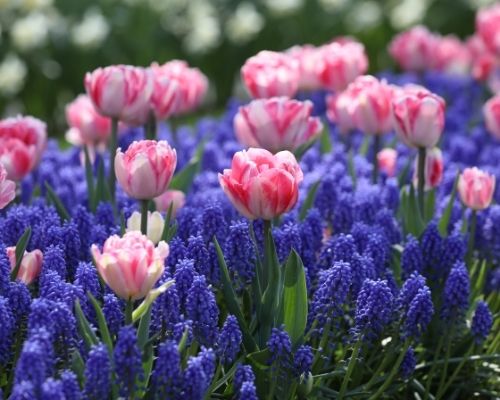Learn About Bulbs, Corms, Tubers and More!
Many of the plants that we commonly consider "bulbs" are actually corms, tubers, tuberous roots or rhizomes. All are food storage vessels -- a way for plants to store energy for the next growing season.
TRUE BULBS typically have a rounded shape and are composed of layers. In the very center is the shoot, which includes immature flowers and layers of leaves. The shoot connects to a basal plate that will generate the roots. Food storage tissue surrounds the shoot and an outer covering protects the bulb.
Examples of True Bulbs: Allium, Amaryllis, Daffodil, Dutch Iris, Fritillaria, Hyacinths, Muscari, Scilla, Tulips, Lilies

TUBERS are distinguished from bulbs and corms by the absence of a skin. Gnarly in appearance, they are actually enlarged stem tissue and can be cylindrical and flattened or irregular in shape. Stems and flowers develop from "eyes" or buds on the tuber.
Examples of Tubers: Anemone, Caladium, Cyclamen
TUBEROUS ROOTS are fleshy roots that can be either single or branched. Buds develop where the tuberous root connects to the base of the old stem.
Examples of Tuberous Roots: Begonia, Dahlia, Ranunculus
RHIZOMES are enlarged stems where the plant stores starches and other food energy. They typically grow horizontally, and depending on the type of plant, can be located underground or at the soil surface. Roots and shoots emerge from the nodes, so each node can produce a complete plant.
Examples of Rhizomes: Bearded Iris, Callas, Lily of the Valley

